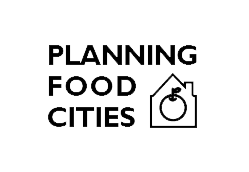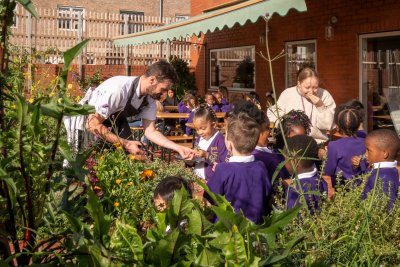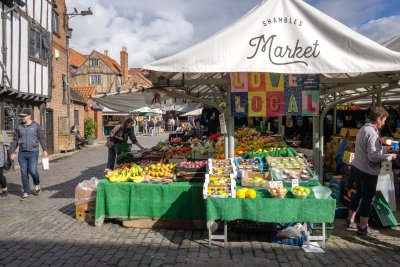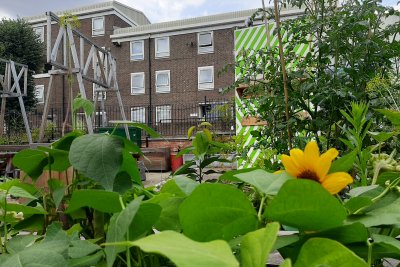Planning Food Cities is an online toolkit designed to help community organisations use the planning system.
The guide primarily addresses support for urban community food growing and is being expanded to include other food and planning issues.
Get started Planning newsletter
The local plan making system differs in each nation. We are working in detail with English cities. Other communities must apply the lessons learnt to the system in their own country.
What has planning got to do with food
Neighbourhood design
Well designed places ensure residents have access to facilities and services for their everyday needs. This means, in the context of food, new development should contribute to open space, allotments, food growing, local shops and public spaces such as markets. The aim is that new development enhances the health and wellbeing of local communities.
Community food growing
Food growing communities usually come across the planning system either when a valued space is under threat from a developer applying for planning permission or when they have to apply for planning permission themselves. However, communities can also play a proactive role in planning by helping to set the policies which will be used to assess planning applications.
Planning policies can support urban food growing by:
- Providing space for growing food within new developments
- Including edible plants and trees in planting schemes in new developments
- Encouraging local groups starting a community food growing space
- Protecting open space under threat from a proposed development
- Using land for food growing on a temporary basis eg pending its redevelopment.
Healthy high streets
Planning policies can support healthy food retail by:
- Protecting and supporting sites for market stalls
- Controlling hot food takeaways
- Ensuring access to community / local shops
Public realm
The provision of free drinking water fountains helps improve public health, reduces waste from single-use plastic bottles and supports the circular economy through the use of reusable water bottles. Sustain has published a guide for communities. Planning policies can seek provision of drinking water fountains in new developments.
Edible landscapes will familiarise the public with food and where it comes from.
Landscape policies can encourage the inclusion of edible plants such as fruit, nuts, herbs in the design and layout of buildings and landscaping of all major developments.
Advertisements have an adverse effect on amenity; they add clutter to the public realm and cause stress where there are excessive numbers targetting vulnerable people to buy unhealthy food.
Planning policies can control telephone boxes eg that are within 400 metres of schools.
Design of homes
Inadequate kitchen and dining facilities can push families into having to buy unhealthy prepared food which is easily available from takeaways resulting in greater health inequalities and food poverty. Homes should be designed with space to store food and to prepare & cook fresh food.
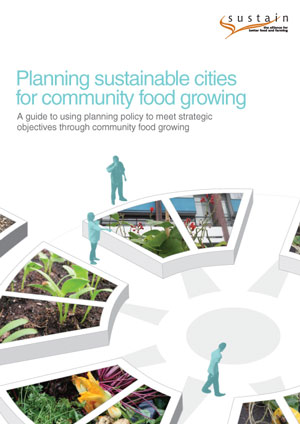 Planning for community food growing space
Planning for community food growing space
Sustain is supporting food partnerships in Sustainable Food Places to get engaged in local plan making – specifically to increase the provision of space for community food growing.
- Follow our Sustainable Food City partners that are starting out on this journey.
We have already published guidance for planners on writing policies for community food growing. This online toolkit will contain stories from the point of view of community food growers. Sustainable Food Cities will be passing on their experience of getting involved in planning through this website over the next year.
We will follow them as they find out what the planners are doing, learn the language of planning policy, get political support and make submissions as part of the formal process of making local plans.
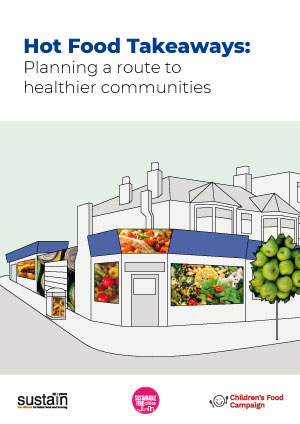 Planning controls for hot food takeaways
Planning controls for hot food takeaways
This report provides a guide to what evidence local areas need to collect to support and defend planning policies to restrict new hot food takeaways. The report also makes a series of recommendations on planning, design and licensing to tackle child obesity.
Hot Food Takeaways: Planning a route to healthier communities
Climate and nature emergency
Every Mouthful Counts toolkit for Local Authorities helps councils identify where big emissions savings can be made through food, with links to helpful resources. Sustain invites councils to take the Planning for the Planet Pledge. Specific actions for the planning service are in the section Land Use, Farming and Planning.
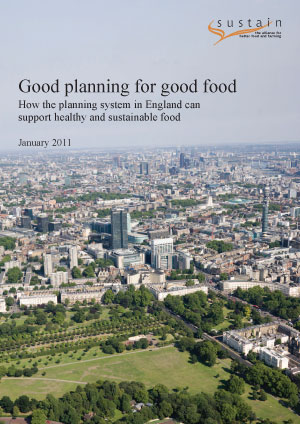 Planning food cities - other food issues
Planning food cities - other food issues
Don’t forget that planning policy can also
- Result in improvements to the public realm.
- Control, protect and increase both the number and the diversity of types of food retail outlets – such as hot food take-aways, small shops and markets - locally, and within easy walking distance of communities, or by public transport.
- Discourage food waste, and stimulate productive and/or environmentally benign ways of using unavoidable food waste.
- Support jobs in the food and farming sector by encouraging small- and medium-sized food enterprises (SMEs), such as markets and on-site farm shops, and local and regional distribution infrastructure.
For more information see Sustain’s report: Good planning for good food - using planning policy for local and sustainable food, Local Action on Food (2011) Please note that national planning policy has been updated since this report was published.
Planning Food Cities: Find out how to get involved shaping the future of your local area to create a more sustainable and local food system.
